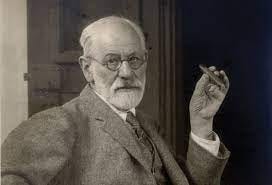Hypnosis Part 1 of 3
The Art and Science of Trance and Treatment
Hypnosis: What is it? How does it work? Can it help me?
Frequent questions when the topic of hypnosis comes up.
Yes, I practice hypnotherapy, but this is not to say that I use hypnosis with everyone.
It is effective for the right person under the right circumstances.
Its checkered history makes identifying who might benefit from hypnotic trance difficult.
History of Hypnosis and Hypnotherapy
Where did hypnosis come from?
Variants of hypnosis originated in sleep and dreaming. Dreaming and the interpretation of the dream are prominent in ancient Egyptian artifacts. The Egyptians believed that dreaming was an altered state of accurate awareness.
In later Mesopotamia, early hypnosis was one method of divining truth from the otherworld. One example comes from the oracle of Delphi in central Greece. The Oracle (sibyl) sat over a crack in the earth that emitted psychoactive fumes. The job of the sibyl was to hear the questions of the “supplicant” and speak prophetically or clearly in response. The inducement of an altered state suggests a hypnotic trance. Today, some believe that trance can be used to discern truth by accessing a person’s deep-seated memories.
The first written contemporary experiments of altered consciousness through verbal suggestions were reported by Franz Anton Mesmer (1734-1815), who described an ethereal force he labelled as animal magnetism, or fluidum. When a patient was induced into a trance state, Mesmer postulated that this spiritual fluid connected the patient with the healer (himself) through an entwined state of consciousness. This viewpoint, of course, made Mesmer a very sought-after man who could connect with prescient spiritual forces.
Later researchers and practitioners, notably Josef Breuer, Sigmund Freud, and Jean Piaget, became interested in what they observed as this special clinical state of human consciousness and awareness that seemed to be generated by only verbal suggestion from the doctor.
Freud’s interest in hypnosis focused on “post-hypnotic suggestion.” In his own words, in 1889, Freud wrote that he ”received the profoundest impression of the possibility that there could be powerful mental processes which nevertheless remained hidden from the consciousness of men..” (Freud, 1925/1959, p. 17). Freud eventually concluded…existence and mode of operation of the mental unconscious…as…proof of the existence of unconscious psychical acts…” (Freud, 1940/1964, p. 285).
Hypnosis was only a sideshow in Freud’s primary interest in labeling what he thought was a special state of awareness unknown to the individual that Freud called the unconscious. The mechanism for engaging the unconscious, at first, was the hypnotically induced trance, or through the reporting of dreams by his patients. Later, Freud employed free association and close observation with his patients.
What is Hypnosis?
Hypnosis is a trance induction?
What is a Trance?
The Dictionary defines trance as: 1. A half-conscious state, seemingly between sleeping and waking, in which ability to function voluntarily may be suspended, esp. a state produced by hypnosis or religious ecstasy. 2. a dazed or bewildered condition. 3. a state of complete mental absorption or deep musing.
Hypnosis is the process; trance is the outcome. There are times when you may have been in a trance state and not been aware of it. You probably didn’t acknowledge the effect of “hypnotism.” You may have, however, felt its effects.
Instances of naturally occurring trance.
Watching an absorbing movie and not realizing you have been sitting for two hours.
During an automobile, bicycle, motorcycle, or fast-moving accident, you might feel that time has slowed.
When you are engrossed in a conversation with another person (say a lover) and time seemed to fly by.
When you are just awaking or when you were in a state of daydreaming, you noticed that you might have felt physically frozen or stuck in space and time.
Zoning Out: The experience of prolonged spaciness or brain fog if, say, you’re dealing with grief, a painful romantic break-up, or other challenging life circumstances. Zoning out is considered a mild form of dissociation.
How does Hypnosis Work?
Hypnosis is a specific psycho-neurological state. It is believed that the brain regions implicated in hypnosis are the: 1. The occipital, parietal, precentral, premotor, and ventrolateral prefrontal cortices, 2. The anterior cingulate gyrus, which responds to errors and evaluates emotional outcomes, and 3. The prefrontal cortex.
The “activating” and “synthesizing” brain structures are the engine, so to speak, that drives a trance state and hypnotic induction, which starts the process. In essence, the brain, upon strategic suggestion, recruits selective information from memory (hippocampus), emotion (hypothalamus), and sensory perception (the superior colliculus and various cortical structures) to create a gestalt experience, commonly known as a “trance state.”
When a trance is induced, the person in trance essentially gives the hypnotist selective permission to act as a guide through an altered state of understanding and awareness. This tacit permission is frequently why people have difficulty remembering when they were actually in a trance state. This is also where people get the idea that the hypnotist can take over a person’s will or desires.
This does not hold up when research has tested highly hypnotizable people who are in a trance to act against, say, core values or beliefs. If the hypnotized subject becomes aware of this, the trance state will be interrupted or completely aborted. This is why trust (and personal desire) are essential components of the hypnosis experience.
Can I be hypnotized?
This is a compelling question and the answer is not simple. Research has suggested that about 10% of the adult population have the capability to be hypnotized. If you have ever attended a stage hypnosis demonstration, the first thing that the hypnotist does is ask for volunteers. The stage hypnotist wants to find people who desire to be hypnotized, and volunteering is a strong measure of desire. After the volunteers are on the stage, the hypnotist goes through several exercises. Having the group imagine that one hand is weighted down and one hand is being pulled up by a balloon. The hypnotist watches closely for responses that are more autonomic versus will-driven. Then, volunteers are eliminated based on their response to the hypnotists exercises. In the end, the stage hypnosis identifies a small group of 6 to 12 persons remain. This becomes the hypnotist’s performance group.
HYPNOTIZEABILITY SELF-ASSESSMENT TEST
You can also do this through self-evaluation. Below is a routine 10-item test of hypnotizeability. In this test there are three responses A (worth 10 points) B (worth 5 points) C (worth zero points).
Close your eyes and imagine yourself at a movie. How clearly can you picture your favorite actor? A. Extremely, B. Vaguely, C. Can’t at all.
You are on a diet and you are bored. Ice Cream is in the freezer. Will you: A. Leave it there? B. Take one bite, C. Eat more than you should.
You’re most comfortable in a: A. Plane, B. Train, C. Your own car.
Imagine a place and time where you were really happy. Can you re-experience it? A. Well, B. So-So, C. Barely.
Your boss chews you out in front of co-workers. How well can you control your emotions? A. I’m in control and won’t lose it in front of others., B. I can hold it together for a short while., C. I fall to pieces, react, blow up immediately.
How long does it take you to fall asleep. A. 10 minutes, B. Half an hour, C. At least an hour.
Imagine you’re in love. How vivid is your image or feeling of this love state? A. Very vivid, B. Somewhat vivid, C. Not clear at all.
You’re last off a bus and you find a wallet filled with money. Assuming your intentions are honest, you: A. Take it to the driver., B. Take it right to to the police station, C. Take it, keep it for a while and try to call the owner.
You daydream. A. A lot., B. From time to time, C. Rarely, if ever.
Think about a proud moment in your life when friends and family cheered you on. Close your eyes and try to re-experience the moment. This was: A. Easy to do and feel once again the moment, B. It takes a while, but you can feel the moment again., C. It’s difficult to feel the moment, the past is in the past.
————————————————-
Give yourself 10 points for A answers, 5 points for B answers, 0 points for C answers.
55-100 You likely have a good imagination, you can trust and let go easily. You are probably very hypnotizeable.
25-45: If you can get past your analytic approach to things and focus on the imaginary aspects of your past or present, you can eventually be hypnotized.
0-24: You likely have a highly analytic and somewhat fear-oriented world-view. It would take great effort on your part and practice to develop the capability to be hypnotized.
This concludes Part I. You now have an introduction, a better understanding, and a rough sense of your own capability to be hypnotized.
Part II describes the setting, process, and what might be the consequence of hypnosis should you seek it out.
If you have some experiences or thoughts about this subject, I’d be happy to read and respond to these:







